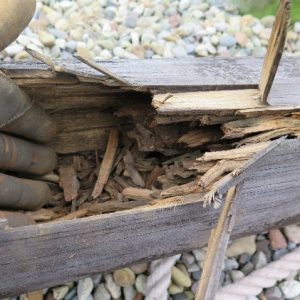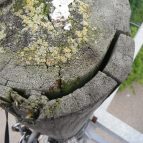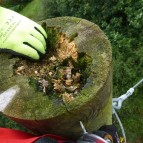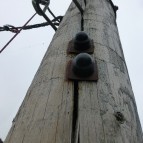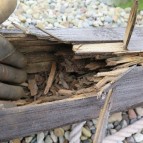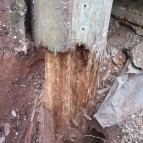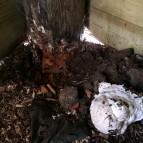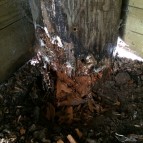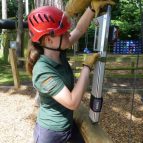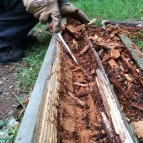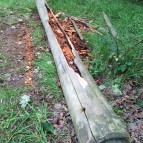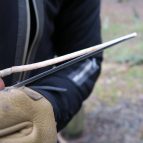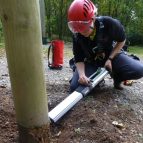Wood poles are used widely in the ropes course industry. These have a limited service life and are subject to degradation over a period of time.
Wooden poles used on ropes courses are exposed to the weather and external forces. The environment where the ropes course is situated can influence if there will be decay on the pole. Many of the older poles we have inspected have not been properly protected and as a consequence have either had to be replaced or modified to make them safe.
Inspection of the pole is therefore required to detect poles with damage or decay from ground line to the pole top.
A periodical pole inspection of poles used on a ropes course should be carried out at least each year by an experienced and competent inspection body.
The main purpose of the periodical pole inspection is to identify:
- Unserviceable poles
- Pole where decay/rot has occurred
- Damage to poles e.g. through cracking and external factors such as woodpeckers.
Inspections of wooden poles can include;
- Visual inspection
- Sound inspection
- Boring test
- Digging inspection
The primary purpose of sounding is to assist in the identification of internal defects between ground line and as high as you can comfortably reach.When performing the sounding of a pole, concentrate on both the sound that is developed and the amount the hammer rebounds.
Boring testing a pole at the locations where bad soundings were obtained will clearly establish the type and extent of decay. Increment borers are most commonly used.
To check for surface rot, dig the pole out to a depth of at least 300mm. Dig around the whole pole. Brush the pole free of dirt and examine its surface for rot.
In addition to the previously described methods of testing, there are many other systems on the market such as digital systems which provide more accurate assessment of the structure of the pole.
These can include the use of a Resistograph drill (an electronic, high resolution needle drill, resistance measurement device). A long thin needle is drilled into wood. The electric power consumption of the drilling device is measured, recorded and printed.
Early detection allows possible remedial treatment to be used on the pole to extend the service life. Technical Outdoor Solutions has the knowledge, skills and tools to provide in-depth inspections and assist in the management of their service life, ensuring each client gets the most out of their wooden poles.
To discuss your individual needs or for advice, please contact us and we can arrange a meeting.

